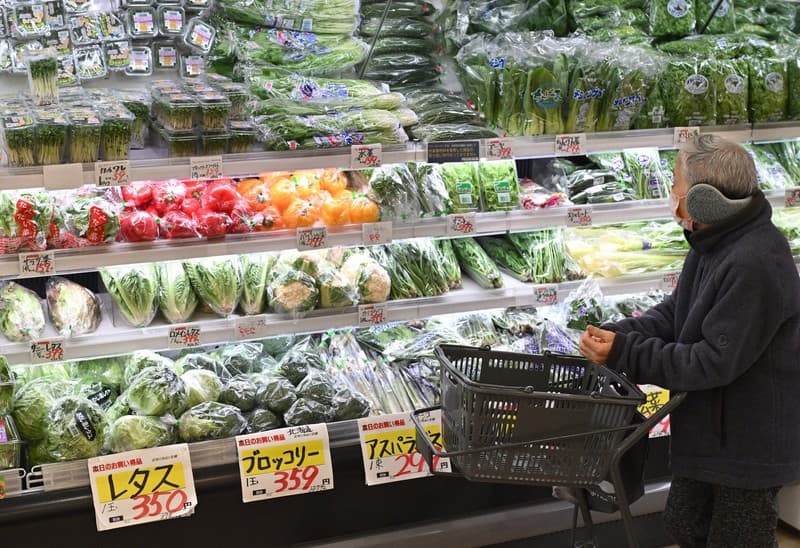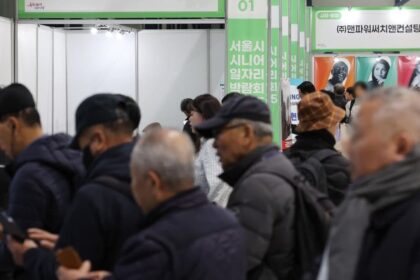Rising prices push scholarship families to skip meals
Food insecurity is tightening its grip on many households raising teenagers in Japan, especially families who rely on scholarships after the loss of a parent. A new survey of guardians of high school scholarship recipients found that more than half experienced times in the past year when they could not afford necessary food. The results paint a stark picture of how rising prices are straining already fragile budgets, with some families reporting that they have been eating only once a day or worrying about how to keep their homes warm this winter.
- Rising prices push scholarship families to skip meals
- Who Ashinaga supports and why this group is vulnerable
- Household budgets under strain
- Why prices are rising in Japan
- Consequences for students and learning
- Scholarship demand outpaces funding
- What the survey measured and what it did not
- What support exists today
- What could help now
- How the public can help
- At a Glance
The Tokyo based Ashinaga Foundation, which supports children who have lost a parent or whose caregivers face severe hardship, surveyed guardians tied to 3,487 scholarship households during August and September. Preliminary findings from 1,447 online responses show that 12.4 percent said they often could not buy needed food, 20.6 percent said sometimes, and 21.5 percent said once in a while. Taken together, a clear majority experienced food insecurity over the past year. The stress is not limited to the dinner table. About 33.8 percent reported falling behind on basic bills such as utilities, rent, or taxes at least once.
Open responses from guardians point to the tradeoffs behind those statistics. Parents described cutting meals, wearing minimal clothing to lower costs, and anxiety over winter heating. These are not isolated stories, they reflect a broader squeeze on low income households at a time of persistent inflation and weak wage growth for many part time and nonregular workers.
An Ashinaga survey coordinator underscored the urgency for families that have endured the loss of a parent. After reviewing the findings, the coordinator said the daily struggle is a matter of immediate survival and called for swift action to ease inequality and support children through school. As the coordinator put it:
Rising prices are an urgent issue for daily survival for families with children who lost parents. Swift economic measures to address inequality are needed.
Who Ashinaga supports and why this group is vulnerable
Ashinaga is a long standing nonprofit based in Tokyo that offers scholarships and emotional care to bereaved children, from primary school through university. The foundation’s high school program has shifted toward grants that do not require repayment, a change designed to prevent debt from shaping students’ education choices. That shift, combined with rising prices, has increased demand from families who already bear heavy financial and emotional burdens.
How loss and low wages compound risk
Households led by a single caregiver or a guardian with limited earning power face a higher risk of poverty. Many work in nonregular jobs that offer lower pay and less stable hours, which makes it hard to keep up with rising costs. In a separate Ashinaga survey covering both high school and university students, more than 90 percent of guardians said their income did not keep pace with living costs. Over 70 percent reported annual earnings under about 3 million yen (20,000 dollars), and only 30.1 percent were employed full time. Nearly 60 percent were in nonregular positions such as part time or temporary roles. Few saw pay rise year on year.
These conditions translate directly into choices about food, heating, clothing, and school needs. Families often prioritize rent and tuition related expenses, leaving less for meals and utilities. When prices rise for staples like rice, noodles, cooking oil, and electricity, the margin for error disappears.
Household budgets under strain
The latest high school survey shows how frequently families fall behind. About one in three reported missing or delaying payments on essential bills at least once. Such arrears tend to snowball. A missed utility payment can lead to fees and service interruptions. Late rent risks eviction or forces compromises on living conditions. Tax arrears can trigger penalties that linger across months.
Guardians described cutting food first, then clothing and personal care, and finally utility use. Some reported health effects linked to heat or cold exposure and poor diet, including anemia and heat related illness. For teenagers, this kind of stress can seep into school life. Students may skip club activities to work part time jobs, reduce daily calorie intake, or avoid asking for supplies because they know the household budget is under pressure.
Access to support often depends on awareness and time. Navigating local welfare programs, school fee waivers, or nonprofit aid can be complex. A single caregiver juggling work and childcare may struggle to gather documentation or make repeated trips to government offices, especially if work schedules are irregular.
Why prices are rising in Japan
Japan’s recent price surge has been driven by several overlapping forces. A weaker yen raised the cost of imported energy, food ingredients, and raw materials. Global supply chain disruptions and higher freight costs pushed up prices for everything from cooking oil to school uniforms. While inflation in Japan has been lower than in some countries, it has been persistent compared with the past decade, and food inflation has often outpaced overall inflation. For households already on tight budgets, even small price increases across many items add up fast.
Electricity and gas bills have been another pain point. International energy prices climbed after 2022. Government subsidies helped moderate the worst spikes, but many families still saw higher monthly bills. Winter presents a specific challenge for low income households, and this is reflected in guardians’ anxiety about heating costs. When money is short, families may lower indoor temperatures or delay turning on heaters, which can affect health and sleep, particularly for teenagers preparing for exams.
Consequences for students and learning
Food insecurity affects the body and the mind. Adolescents need more calories and nutrients as they grow. Skipping meals or relying on low cost, low nutrient options can sap energy, impair concentration, and increase stress. Over time, poor nutrition is linked with worse academic performance, higher absenteeism, and mental health struggles. Teachers often notice fatigue, a drop in participation, and increased anxiety among students who are not eating enough.
Financial stress can also push students into work to help at home. A few hours a day at a convenience store or restaurant may cover part of the utility bill, but it leaves less time for study and rest. Some students withdraw from club activities that usually support social bonds, confidence, and physical health. The cumulative effect is to narrow the space in which young people can thrive during a period that shapes their future paths.
Scholarship demand outpaces funding
Demand for help has risen faster than available funds. In fiscal 2024, Ashinaga received a record 3,487 applications for its high school scholarships, about 1.3 times the previous year. The foundation’s switch to nonrepayable grants and higher living costs appear to have driven the increase. Funding shortfalls forced a record low acceptance rate of 44.1 percent. Many qualified families were left without support even as bills mounted.
In fiscal 2025, applications totaled 3,217. Expanded fundraising efforts lifted the acceptance rate to 58.4 percent, a meaningful improvement. Yet roughly 40 percent of applicants still could not be supported because money ran out. To reach more children, the foundation plans nationwide street fundraising starting on October 18 at 136 major train stations and busy locations across all 47 prefectures. Student volunteers and staff will seek small gifts from passersby to fund stipends that keep teenagers in school and help them cover daily needs.
What the survey measured and what it did not
The new food insecurity findings come from a preliminary analysis of 1,447 online responses gathered in August and September from guardians tied to 3,487 scholarship households. The foundation also collected postal responses that will be integrated as analysis continues. The results reflect the experiences of families linked to Ashinaga’s high school program, which focuses on students who have lost a parent or whose caregivers face serious hardship. The data does not represent all households in Japan, but it offers a clear window into how price rises affect a large and vulnerable group.
Food insecurity in this context means limited or uncertain access to enough food to live an active and healthy life. When guardians report that they could not afford necessary food, it signals a risk to nutrition and well being. Patterns of bill arrears and cutbacks on essentials, including clothing and heat, reinforce the picture of budgets stretched to breaking point.
What support exists today
Japan offers several safety nets that reduce education costs. Public high schools are tuition free, and there are subsidies for low income families attending private schools. A grant type national scholarship program was introduced for low income students, and many local governments offer fee waivers or emergency allowances for school supplies, transportation, or exam fees. School lunch programs provide balanced meals during the school day, which helps cushion the impact of rising food prices on children.
Private and corporate partners also help fill gaps. MUFG, one of Japan’s major financial groups, funds the Ashinaga MUFG Scholarship that provides nonrepayable support for students, including those pursuing science and medical fields. Companies and community groups run food drives and donate proceeds to education nonprofits. For example, a manufacturing firm organized employee food donations and directed charity proceeds from used books to support Ashinaga’s scholarship and care programs. These initiatives cannot replace public policy, but they extend the reach of aid and draw attention to urgent needs.
Ashinaga itself pairs financial aid with emotional support. Counselors and program staff help students set goals, manage grief, and plan for exams and career steps. In Japan and abroad, the foundation has emphasized psychosocial care alongside scholarship funding, recognizing that learning outcomes improve when both needs are addressed.
What could help now
The survey’s findings point to immediate and practical steps that can protect students while prices remain high. Some can be implemented quickly by local governments and schools, while others require central government budgets and legislative changes. Nonprofits and businesses can also adapt programs to the stresses families describe.
- Targeted cash support for bereaved households during winter months to offset food and heating costs.
- Expanded grant scholarship budgets so that qualified students are not turned away when applications spike.
- Utility arrears relief coordinated with energy providers to keep lights and heat on for families with school age children.
- School based food support that extends beyond lunch, for example breakfast offerings before homeroom or take home staples during holidays.
- Fee waivers and centralized assistance for exam costs, transportation, and uniforms, with simple applications and faster decisions.
- Closer coordination between schools, social workers, and welfare offices to identify students facing hunger or bill arrears early.
- Workplace measures that stabilize hours and earnings for guardians in nonregular jobs, including predictable scheduling and access to benefits.
- Donor matching campaigns that encourage individuals and companies to contribute during fundraising drives.
These actions do not require large bureaucratic systems to be built from scratch. Many exist in some form and can be scaled or simplified. The returns are immediate. A reliable meal at school, a waived exam fee, or a small monthly stipend can be the difference between a student staying on track and drifting away from education.
How the public can help
Community support remains vital while budgets catch up to need. Street fundraising by Ashinaga will run nationwide from October 18, with student volunteers collecting small gifts that add up to scholarships and daily stipends. People who cannot give in person can look for verified online donation channels or support local food banks that partner with schools and nonprofits.
Employers can organize payroll giving or match employee donations during the campaign period. Parent teacher groups and alumni networks can sponsor supplies, fare cards, or school meals for students in need. Small steps at the neighborhood level, coupled with policy action, can help stabilize families who are now making daily tradeoffs between food, heat, and school costs.
At a Glance
- More than half of surveyed guardians of high school scholarship students reported times they could not afford necessary food in the past year.
- Among 1,447 online responses, 12.4 percent said often, 20.6 percent said sometimes, and 21.5 percent said once in a while.
- About 33.8 percent fell behind on utilities, rent, or taxes at least once over the past year.
- In a broader survey, over 90 percent said income did not keep up with living costs, with most guardians in nonregular or part time work.
- Demand for Ashinaga’s high school scholarships peaked at 3,487 applications in fiscal 2024, with a 44.1 percent acceptance rate.
- In fiscal 2025, 3,217 applied and 58.4 percent were accepted, yet roughly 40 percent still went without support.
- A national street fundraising campaign starts on October 18 at 136 major stations and locations across all 47 prefectures.
- Short term steps such as targeted cash aid, utility relief, expanded grant budgets, and school based food support can reduce risk for students.












